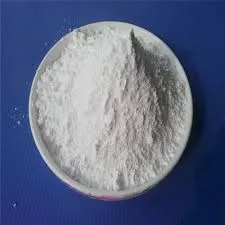Exploring Anionic PAM Properties, Applications, and Benefits
Anionic Polyacrylamide (PAM) is a synthetic polymer that has gained prominence in various industries due to its unique properties and versatility. This article delves into the characteristics, applications, and benefits of anionic PAM, highlighting its significance in different sectors.
What is Anionic PAM?
Anionic PAM is a water-soluble polymer derived from the polymerization of acrylamide and anionic monomers. The anionic part refers to the negatively charged groups (usually carboxylate) attached to the polymer chain, which impart unique properties to the compound. The molecular weight of anionic PAM can vary significantly, generally ranging from low to high, affecting its solubility and effectiveness based on the application.
Properties of Anionic PAM
Anionic PAM exhibits several noteworthy properties
1. High Solubility It is highly soluble in water, making it easy to incorporate into various aqueous solutions. 2. Viscosity Modification Anionic PAM can significantly alter the viscosity of water-based solutions, which is beneficial in numerous processes where control of fluid dynamics is crucial. 3. Flocculation It possesses excellent flocculation properties, enabling it to agglomerate fine particles suspended in liquids. This is particularly useful in wastewater treatment.
4. Adsorption The negative charge allows anionic PAM to interact with positively charged particles, aiding in processes such as soil stabilization and sediment control.
5. Temperature Stability Compared to other flocculants, anionic PAM tends to maintain its effectiveness across a wider range of temperatures and pH levels.
Applications of Anionic PAM
Anionic PAM is utilized in various sectors
1. Water Treatment In municipal and industrial wastewater treatment plants, anionic PAM is used to enhance the sedimentation of colloidal particles. Its flocculating ability accelerates the clarification process, leading to cleaner effluents.
anionic pam

2. Soil Stabilization In agriculture, anionic PAM is employed for soil erosion control and dust suppression. By forming a protective layer on the soil surface, it reduces erosion from wind and water.
3. Mining Anionic PAM is utilized in the mineral processing industry to improve the aggregation of minerals during flotation, increasing the yield and purity of extracted ores.
4. Paper Manufacturing The paper industry uses anionic PAM as a retention aid, helping to improve the retention of fibrous materials during the paper-making process, leading to enhanced quality and reduced wastage.
5. Oil Recovery In enhanced oil recovery processes, anionic PAM is used to increase the viscosity of water injected into oil reservoirs, improving the displacement of oil and increasing overall recovery rates.
Benefits of Anionic PAM
The incorporation of anionic PAM in various processes offers numerous advantages
1. Cost-Effectiveness Using anionic PAM can significantly reduce operational costs in water treatment and other processes by improving efficiency and reducing waste.
2. Environmental Impact Anionic PAM is generally considered environmentally friendly when used as directed. It can aid in reducing pollutants and improving water quality.
3. Enhanced Performance The ability to modify viscosity and promote flocculation leads to improved performance in applications, ensuring optimal results.
4. Versatility Its adaptability across different industries underscores its value as a multi-functional agent.
Conclusion
Anionic PAM is an invaluable tool across numerous industrial applications, from water treatment to agriculture and mining. Its unique properties of solubility, viscosity modification, and flocculation make it a preferred choice for many processes aimed at efficiency and environmental sustainability. As industries continue to seek innovative solutions for their challenges, the relevance of anionic PAM is set to grow, solidifying its position as an essential polymer in modern applications.

